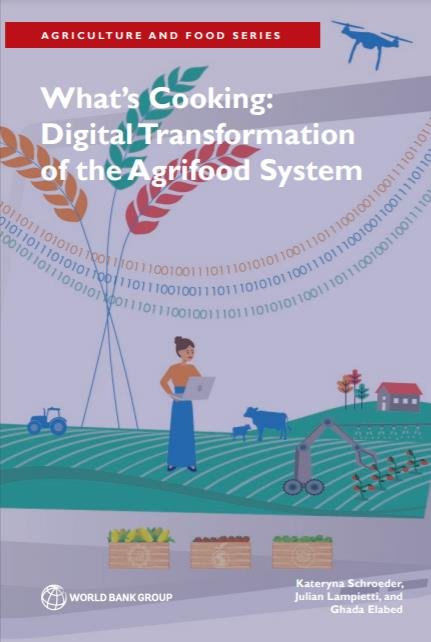 Read this article in French
Read this article in French- Share this article
- Subscribe to our newsletter
Digital Transformation of the Agrifood System
The report What’s Cooking: Digital Transformation of the Agrifood System was published by the World Bank in March 2021. In 2014, an average of 190,000 data points were produced per farm, per day, and experts have predicted that by 2050 each farm will produce around 4.1 million data points daily. When farmers are able to analyse this mass of information it is possible for them to adjust their planting and ensure what they grow has a market that will make it profitable.
This report explores how digital technologies are improving the food system, and provides a roadmap for countries to scale-up their own digital agriculture, which means the use of digital technologies in the agriculture and food system. The report also provides a framework to evaluate policy proposals that can make the food system more efficient, equitable and environmentally sustainable.
Improving farmers lives and the environment
Digital technologies can stimulate the adoption of improved seeds and fertilizers by enhancing farmers’ access to information about the range of what is available and how, when and where to use it well. And the same technologies can advance the tracking of produce from the farm to the consumer, which can boost food safety as well as helping buyers to know the environmental footprint and nutritional value of what they are buying.
Moreover, digital transformation can lead to improved resource efficiency through tools such as precision agriculture. It can cut down on food loss and waste by letting the market help dictate what farmers grow. And through proper labelling of products, consumers will be able to choose food grown in an environmentally responsible way.
There are still some obstacles
Without a strong technological infrastructure equally available to all, it is possible that the changes discussed in the report could lead to deepening the divide between “haves” and “have nots”. Farmers who have the means and wherewithal to invest in new technology will have easier access to crucial information and markets.
The lacking compatibility between different data sources can make it difficult to obtain a full picture of conditions in the market and the environment. Concerns over data privacy and proprietary systems also contribute to the difficulty.
And there is also a concern that those who develop, own, and operate the digital solutions may try to keep the knowledge, power, and revenue generated for themselves.
(World Bank/ile)
Read more at World Bank website





Add a comment
Be the First to Comment